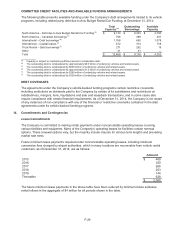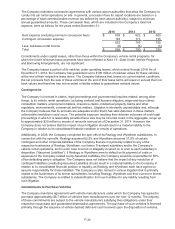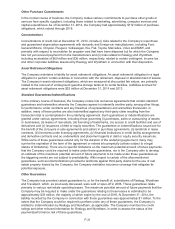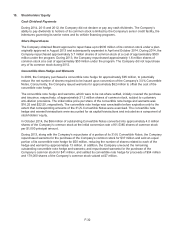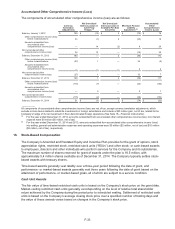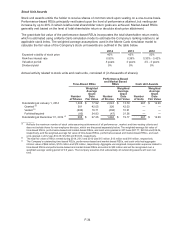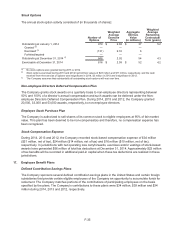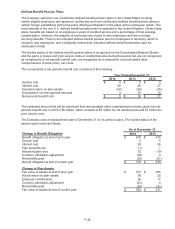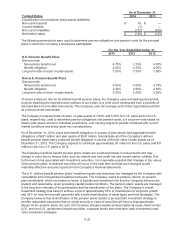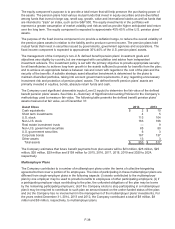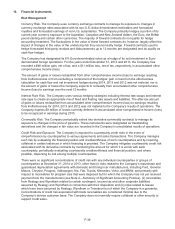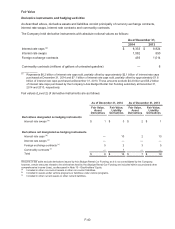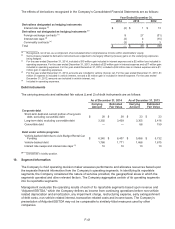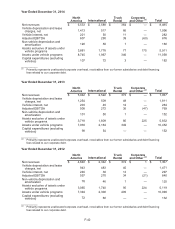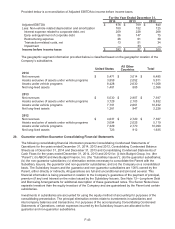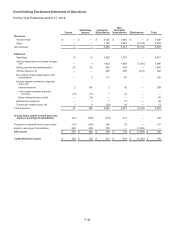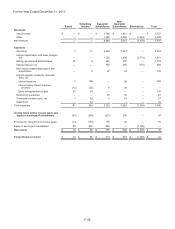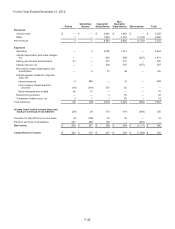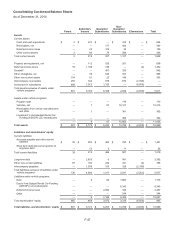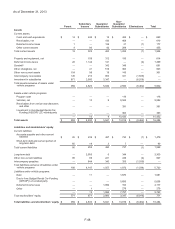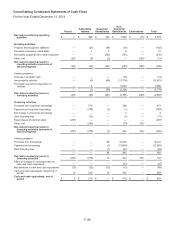Avis 2014 Annual Report Download - page 106
Download and view the complete annual report
Please find page 106 of the 2014 Avis annual report below. You can navigate through the pages in the report by either clicking on the pages listed below, or by using the keyword search tool below to find specific information within the annual report.F-39
18. Financial Instruments
Risk Management
Currency Risk. The Company uses currency exchange contracts to manage its exposure to changes in
currency exchange rates associated with its non-U.S.-dollar denominated receivables and forecasted
royalties and forecasted earnings of non-U.S. subsidiaries. The Company primarily hedges a portion of its
current-year currency exposure to the Australian, Canadian and New Zealand dollars, the Euro, the British
pound sterling and certain other currencies. The majority of forward contracts do not qualify for hedge
accounting treatment. The fluctuations in the value of these forward contracts do, however, largely offset the
impact of changes in the value of the underlying risk they economically hedge. Forward contracts used to
hedge forecasted third-party receipts and disbursements up to 12 months are designated and do qualify as
cash flow hedges.
The Company has designated its 6% Euro-denominated notes as a hedge of its net investment in Euro-
denominated foreign operations. For the years ended December 31, 2014 and 2013, the Company has
recorded a $46 million gain, net of tax, and a $11 million loss, net of tax, respectively, in accumulated other
comprehensive income (loss).
The amount of gains or losses reclassified from other comprehensive income (loss) to earnings resulting
from ineffectiveness or from excluding a component of the hedges’ gain or loss from the effectiveness
calculation for cash flow and net investment hedges during 2014, 2013 and 2012 was not material, nor is
the amount of gains or losses the Company expects to reclassify from accumulated other comprehensive
income (loss) to earnings over the next 12 months.
Interest Rate Risk. The Company uses various hedging strategies including interest rate swaps and interest
rate caps to create an appropriate mix of fixed and floating rate assets and liabilities. The after-tax amount
of gains or losses reclassified from accumulated other comprehensive income (loss) to earnings resulting
from ineffectiveness for 2014, 2013 and 2012 was not material to the Company’s results of operations. The
Company expects $8 million of losses currently deferred in accumulated other comprehensive income (loss)
to be recognized in earnings during 2015.
Commodity Risk. The Company periodically enters into derivative commodity contracts to manage its
exposure to changes in the price of gasoline. These instruments were designated as freestanding
derivatives and the changes in fair value are recorded in the Company’s consolidated results of operations.
Credit Risk and Exposure. The Company is exposed to counterparty credit risks in the event of
nonperformance by counterparties to various agreements and sales transactions. The Company manages
such risk by evaluating the financial position and creditworthiness of such counterparties and by requiring
collateral in certain instances in which financing is provided. The Company mitigates counterparty credit risk
associated with its derivative contracts by monitoring the amount for which it is at risk with each
counterparty, periodically evaluating counterparty creditworthiness and financial position, and where
possible, dispersing its risk among multiple counterparties.
There were no significant concentrations of credit risk with any individual counterparties or groups of
counterparties at December 31, 2014 or 2013, other than (i) risks related to the Company’s repurchase and
guaranteed depreciation agreements with domestic and foreign car manufacturers, including Ford, General
Motors, Chrysler, Peugeot, Volkswagen, Kia, Fiat, Toyota, Mercedes, Volvo, and BMW, and primarily with
respect to receivables for program cars that were disposed but for which the Company has not yet received
payment from the manufacturers (see Note 2—Summary of Significant Accounting Policies), (ii) receivables
from Realogy and Wyndham related to certain contingent, income tax and other corporate liabilities
assumed by Realogy and Wyndham in connection with their disposition and (iii) risks related to leases
which have been assumed by Realogy, Wyndham or Travelport but of which the Company is a guarantor.
Concentrations of credit risk associated with trade receivables are considered minimal due to the
Company’s diverse customer base. The Company does not normally require collateral or other security to
support credit sales.


